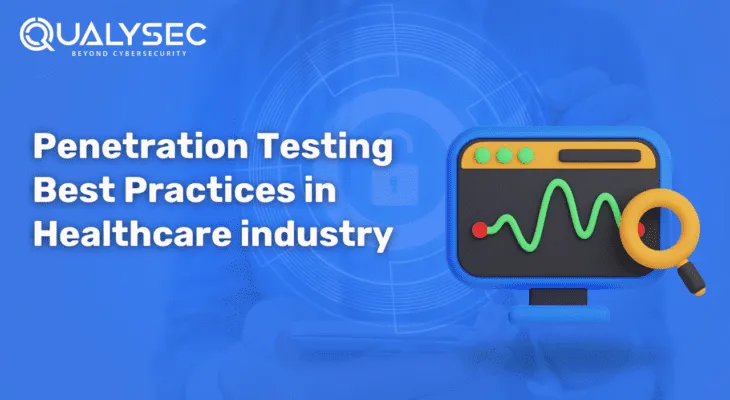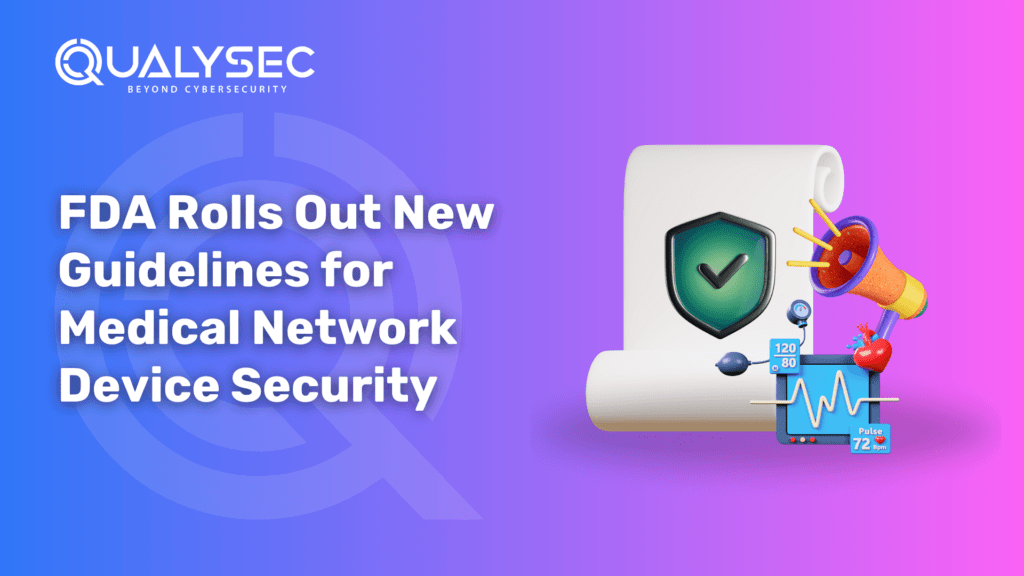Industry Spotlight: Penetration Testing Best Practices in Healthcare Industry
Healthcare firms should be concerned about the security of their sector. According to one study, only around half of healthcare firms dedicate a portion of their IT budget to healthcare in cybersecurity. The larger picture suggests that just around half of healthcare organizations must properly allocate resources to protect patients’ data. In today’s ever-changing cyber world, healthcare businesses face a plethora of possible security risks, particularly those aimed at personal data. Given this year’s significant spike in occurrences, healthcare organizations should invest in healthcare penetration Testing to secure data and applications. In this blog, we’ll take a deep dive into the cyber threats in the healthcare industry and the best practices on how penetration testing can help overcome them. We’ll also go through HIPAA compliance and its importance. Why is the Healthcare Industry Prone to Data Breaches? Healthcare IT teams are responsible for securing hospital applications and medical facilities from cyberattacks, but they confront several challenges in hardening their vast attack surface. The healthcare industry, which houses a plethora of sensitive consumer patient data and IoMT devices, is an excellent target for attackers, notably ransomware assaults. According to 2022 research, ransomware affected 66% of healthcare businesses in 2022. It also found that 61% of respondents with encrypted data were willing to pay the ransom, compared to 46% in other industries. Furthermore, these numbers demonstrate the significance of a continual vulnerability management approach that fixes cybersecurity holes and segments applications to resist ransomware assaults. The following are the top healthcare data breach figures for 2023-2024: According to HIPAA, healthcare data breaches in the United States have fallen by 48%. Ransomware attacks caused a rise in medical issues in 36% of healthcare institutions. Healthcare cybersecurity receives 4-7% of the health system’s IT budget. Negligent personnel are responsible for 61% of healthcare data breach threats. According to a report, the healthcare industry saw almost 337 breaches in the first half of 2022 alone. According to another report, the 337 documented healthcare events affected 19,992,810 people. Hacking accounted for 80% of reported healthcare breaches by US HSS, with unauthorized access accounting for the remaining 15%. The statistics can be overwhelming if you’re into the healthcare business. We know how to solve this. Penetration testing can help you overcome healthcare threats. Discover a Free call with security experts today! Talk to our Cybersecurity Expert to discuss your specific needs and how we can help your business. Schedule a Call The Importance of Protecting Data in Healthcare Both ethical health research and privacy regulations help society significantly. It is critical for ethical research to protect patients engaged in a study from harm and to protect their rights. The basic reason for safeguarding personal privacy is to defend people’s interests. On the other hand, the major reason for gathering individually identifiable health information and Medical device penetration testing services is benefit to society. Health research may help individuals by facilitating access to novel medications, improved diagnostics, and more effective methods of preventing sickness and providing care. Medical device Security and Data Security is presently one of the healthcare industry’s top priorities. Data breaches and cyber assaults have increased dramatically in recent years across the industry. Furthermore, healthcare breaches soared by 55.1% between 2019 and 2020, according to research from 2021. Breach recovery can take time and might be costly to restore. The typical healthcare institution needed 236 days to recover from a data breach; each compromised patient record cost $500. Furthermore, Healthcare breaches are prevalent and can have serious ramifications. By implementing data protection measures, healthcare institutions can remain watchful against assaults and breaches. Patient Data and the HIPAA Privacy Rule Implementing healthcare data security solutions is critical not just for ensuring the safety of patient records. It is also required to follow HIPAA regulations, which require the following: Healthcare institutions should conduct frequent risk assessments to evaluate security measures. To mitigate data vulnerabilities, implement risk management strategies. Maintaining HIPAA compliance as a healthcare business requires the implementation of comprehensive security measures. Read more: Deep Dive into Healthcare Penetration Testing The Top 5 Cyber Threats in the Healthcare Industry The five most significant cybersecurity problems in the healthcare business are described below to illustrate the relevance of healthcare cybersecurity programs in the present cyberattack scenario. These cyber risks represent the greatest danger to patient information and medical device’s security. 1. Phishing The most common cybersecurity threat in healthcare is phishing. Phishing is the technique of inserting dangerous links into seemingly harmless emails. In addition, email phishing is the most prevalent sort of phishing. Phishing emails can appear quite convincing, and they frequently make use of a well-known medical condition to encourage link clicks. 2. Information Breach When compared to other businesses, the healthcare industry experiences a disproportionately high number of data breaches. HIPAA imposes stringent criteria for safeguarding health records and other sensitive information from unauthorized access, but many healthcare organizations need to execute its security procedures. 3. DDoS Attacks A distributed denial-of-service (DDoS) attack is a flood of bogus connection requests directed at a specific server, causing it to go down. Multiple endpoints and IoT devices are forcibly recruited into a botnet via malware infection to engage in this coordinated attack during this attack. DDoS assaults may not provide the same data exfiltration dangers as ransomware attacks but cause the same operational disruption. 4. Obsolete technology Medical technology frequently becomes obsolete due to limited finances and a reluctance to learn new applications. Healthcare companies must respond to the latest cyber dangers to keep their patient data safe. Setting aside funds and investing in the best option for your company is critical. 5. Vulnerabilities in Medical Apps As the usage of linked medical devices or applications such as infusion pumps and pacemakers grows, fraudsters have a new attack surface to exploit. These gadgets’ flaws can be used to risk patient safety. Medical device attacks can risk patient lives, disrupt healthcare operations, and result in expensive legal fights for device makers. Healthcare Penetration Testing : The Saviour for Data and Privacy Healthcare penetration testing serves hospitals, clinics, behavioral





